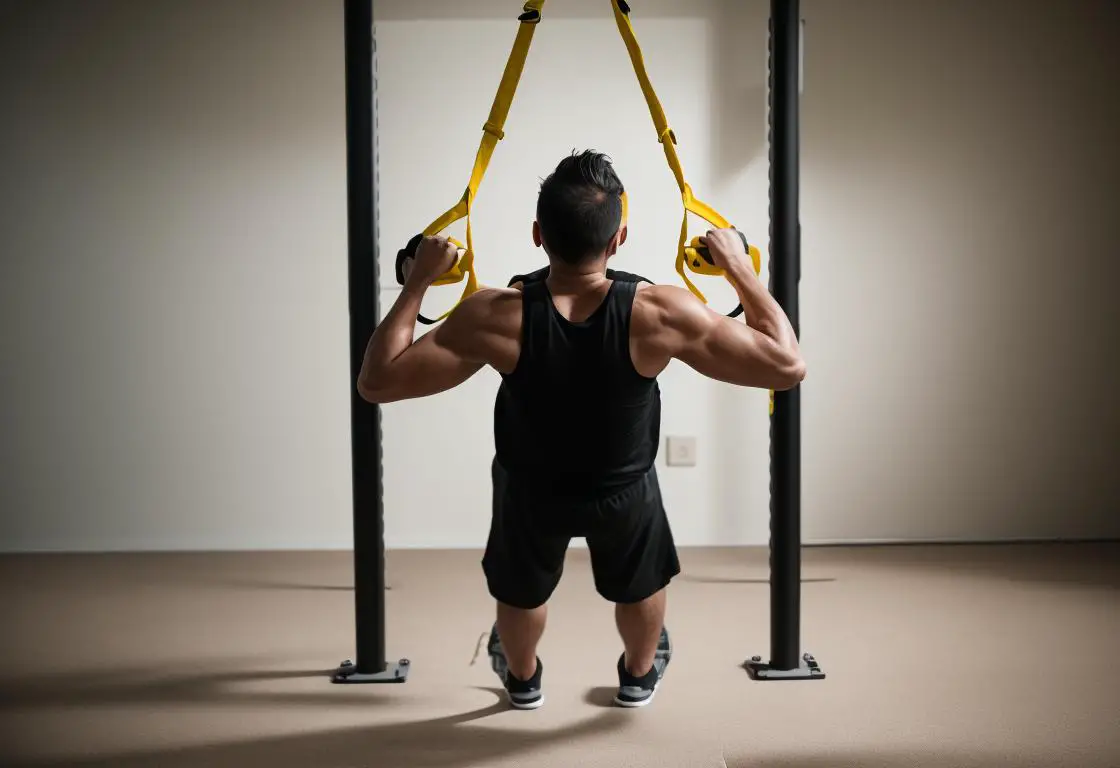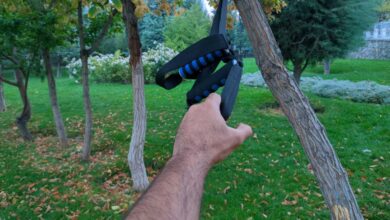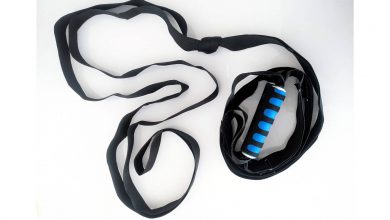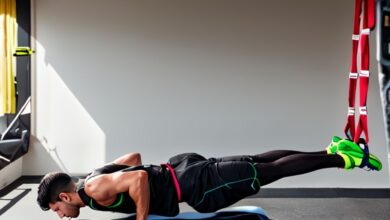If you’re looking to strengthen your back and improve your overall fitness, incorporating TRX back exercises into your workout routine can be a game-changer. TRX, short for Total Resistance Exercise, offers a unique approach to training that utilizes suspended straps to challenge your muscles and improve functional strength.
In this article, we’ll dive into the world of TRX back exercises and explore how they can help you develop a powerful posterior chain. From the upper back and shoulders to the lower back and lats, these exercises target multiple muscle groups, enhance stability, and promote proper alignment.
Throughout this guide, we’ll showcase a range of essential TRX back exercises that you can incorporate into your workouts. So, let’s dive into the world of back exercises and uncover the profound influence they can have on performance.
Table of Contents
Benefits of TRX Back Exercises
A strong and resilient back is not only vital for maintaining proper posture, but also plays a significant role in enhancing overall performance. Athletes engaging in sports such as swimming, rowing, golf, and various racquet sports rely heavily on the power and stability of their back muscles. Incorporating targeted back exercises into their training routines can provide a competitive edge and contribute to improved athletic prowess.
TRX back exercises offer unique benefits that directly translate into enhanced performance. Providing a full range of motion is the distinct feature of TRX back exercises. Freedom to choose the angle to attack the target muscle is another feature of TRX back workouts.
Whether you’re a competitive swimmer, a recreational athlete, or participating in any sport that demands a strong back, understanding the impact of targeted back exercises will help you optimize your performance and reach new heights in your chosen field.
1. TRX Rows for Mid and Upper Back Exercises
The upper back and mid back play a crucial role in maintaining proper posture, supporting the shoulders, and enhancing overall upper body strength.
TRX rows are staple exercises that target the muscles of the back, including the rhomboids and trapezius.
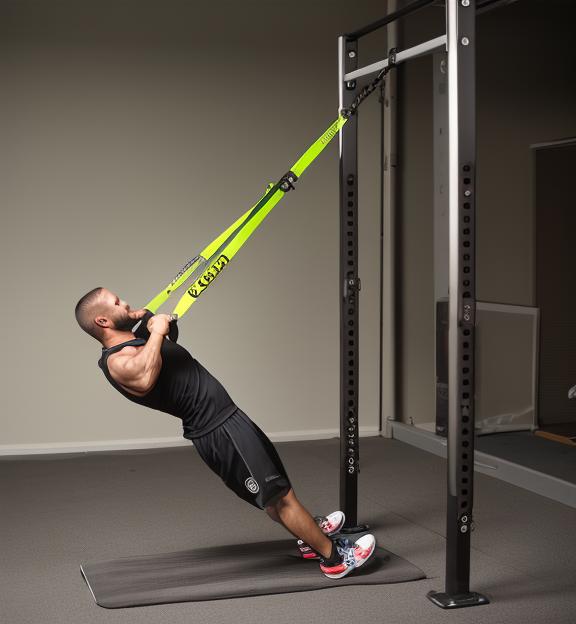
How to Do a TRX Row
TRX back row, which is known as TRX incline row, TRX decline row, and TRX upright row, is the staple TRX row workout. The step-by-step instruction goes as follows:
- Stand facing the anchor point and hold the handles.
- Walk your feet forward, leaning back slightly, and maintaining a straight body line.
- Start with your arms fully extended in front of you, palms facing each other while holding TRX handles.
- Initiate the movement by pulling your elbows back and squeezing your shoulder blades together.
- Slowly return to the starting position.
Focus on contracting the muscles in the middle of your back. Your hands will move toward your sides as you pull, creating a rowing motion. Adjust the difficulty by adjusting the angle of your body or the length of the straps. The steeper your body angle, the harder it becomes. There are other techniques to progress in TRX row, which create other variations of TRX back row.
TRX row progression is by increasing the slope of the body to ultimately horizontal position, which is called TRX inverted row.
Pro tip: As a method of intelligent weight technique, you can push off your body backward using your toes. This creates initial resistance when you are in upright position.
TRX Row Variations by Grip Type
- For TRX overhand row or TRX pronated row, hold TRX handles with palms facing downward and back of the hands are visible.
- TRX underhand grip row or TRX supinated grip row requires palms facing upwards while holding handles. This is also called TRX reverse grip row.
- TRX neutral grip row or TRX hammer grip row requires hands to be in hammer shape, which is a position between pronated and supinated grips.
- TRX twisting grip row. Twist hand grip from one of the above states to another state.
TRX High Row vs. Low Row vs. Mid Row
- TRX low row, which is also called TRX close grip row or TRX narrow grip row. Elbows are down and beside the torso. Hands are close to each other. We can use any of the supinated, pronated, or neutral grip types.
- TRX high row or TRX wide grip row requires elbows to be at chest level, forming 90 degrees angle to torso. Subsequently, hands are wider apart. We can use all three hands positions in this exercise. This is also called TRX high pull.
- TRX mid row required arms position between TRX low row and high row. With elbows at about 45 degrees to the torso.
There is also another interpretation of these three variations, and that is based on the position of TRX anchor point in relation to the torso. In the sense that if you hold your arms straight in front of you, the angle between torso and arm determines whether the exercise is TRX high row or mid row.
Normally, if the angle between straight arms and torso is at about 90 degrees. This is the standard TRX back row or TRX mid row.
However, if you slightly bend your upper body to form a sit-up posture so that your upper body is vertical to the ground, the angle between arms and torso goes wider than 90 degrees. Hence, we are doing TRX high row. We can also try TRX seated row for this exercise.
For TRX low row, it is more convenient to use external weights and attach them to TRX strap.
2. TRX Double Anchor Point Row
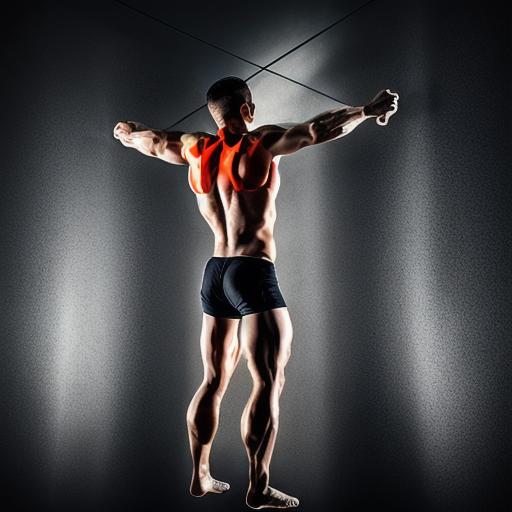
Using two anchor points instead of one adds new variations to TRX back row. Performing TRX back row with dual anchor suspension trainer allows two new variations of the exercise.
- TRX wide grip row with double anchor points
- TRX cross row in which each hand holds a TRX handle in the opposite direction and forms a crossing shape. This variation challenges back muscles in a different range of motion. It also gives a nice stretch to the back muscles.
Read about, single anchor and dual anchor suspension trainer.
3. TRX Inverted Row
TRX inverted row is another TRX row variation. In this exercise, position your body horizontally below the anchor point while facing upwards and holding TRX handles. Due to the body positioning, this exercise is harder than TRX row, and it can be considered a progression of TRX row. TRX inverted row is also called TRX horizontal pull up or TRX supine pull-up.
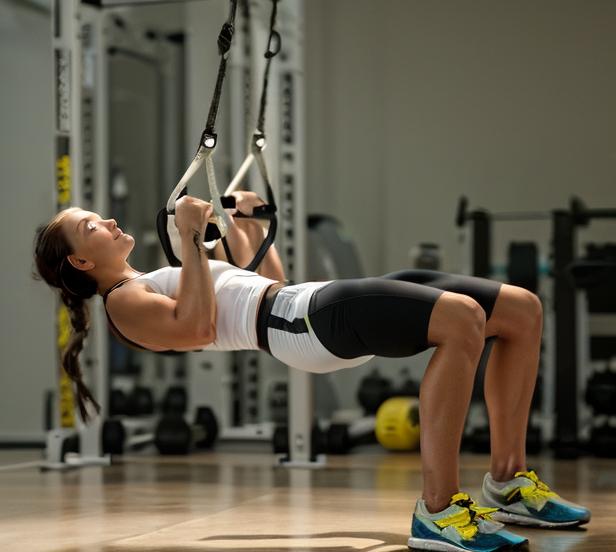
To perform the TRX Inverted Row:
- Adjust the TRX straps to a lower position, close to the ground.
- Lie on your back underneath the anchor point, facing upward.
- Hold the TRX handles with an overhand grip, arms fully extended.
- Position your feet flat on the floor with your knees bent.
- Lift your hips off the ground, creating a straight line from your shoulders to your heels.
- Initiate the movement by pulling your chest towards the handles, engaging your back muscles.
- Squeeze your shoulder blades together as you pull yourself up.
- Lower yourself back down under control to complete the repetition.
TRX Inverted Row Progression
As explained before, we can consider TRX inverted row as the final point of progression for TRX back row, but how to progress with TRX inverted row? There are a few ideas that help in TRX inverted row progression.
- TRX inverted row feet elevated is a straightforward method to make the exercise harder. Put your legs in an elevated position to leverage a higher percentage of your body weight in the movement.
- One-Arm Inverted Row. Once you’ve mastered the standard TRX Inverted Row, you can progress to the one-arm variation. This unilateral movement further challenges your back muscles and adds an element of core stability.
- Weighted TRX inverted row. Once you’ve mastered the bodyweight version, you can add external resistance to the TRX Inverted Row by incorporating a weight plate, dumbbell, or weighted vest.
We can apply all grip types in this exercise, including TRX supinated inverted row, pronated and twisting inverted row.
What is the Difference Between TRX Low Row and Inverted Row?
The TRX inverted row is performed with the body in a horizontal position, facing upward. The primary difference lies in the position of the body and the angle at which the exercise is performed. The TRX Decline Row (or TRX low row), on the other hand, is performed with the body in a declined or angled position.
Inverted Row TRX vs. Bar
There are some notable differences between TRX back exercises and rowing workout with bar. Let’s compare the Inverted Row using TRX and a bar:
Stability and Suspension
The TRX Inverted Row utilizes suspension straps, which require greater stabilization and core engagement compared to the bar version. The instability of the TRX straps challenges your muscles to maintain control throughout the movement, while enhancing overall body awareness and balance.
Adjustable Difficulty
The TRX Inverted Row offers more versatility to adjust the difficulty level. You can increase or decrease the exercise’s intensity by changing the angle of your body or the length of the TRX straps. This makes it suitable for individuals of different fitness levels, allowing for progressive overload and continuous challenge. This adjustability makes TRX back exercises more beginner-friendly.
Range of Motion
The TRX Inverted Row often allows for a greater range of motion compared to the bar variation. With the TRX straps, you can adjust your body angle and positioning to achieve a deeper stretch and contraction of the back muscles. This can lead to improved muscle activation and overall flexibility.
Grip Variation
When using a bar for the Inverted Row, your grip is fixed and limited to the width of the bar. In contrast, the TRX Inverted Row allows for various grip positions. You can experiment with different hand placements, including pronated (overhand), supinated (underhand), or neutral grips, targeting different muscles within the back and arms.
Portability and Accessibility
The TRX suspension straps are highly portable and can be easily set up anywhere with an anchor point, such as a sturdy door, tree, or gym equipment. This makes them ideal for home workouts or on-the-go training. In contrast, performing the Inverted Row with a bar requires access to a suitable barbell, pull-up bar, or Smith machine, limiting its portability and accessibility.
4. TRX Seated Row
The only difference between TRX seated row and the standard TRX back row is that in TRX seated row, knees are slightly bent into a partially seated position. We can use this TRX back exercise as a technique to adjust the amount of pressure in normal TRX row. TRX seated row can also provide a suitable posture for TRX high row which requires a wide angle between arms and torso.
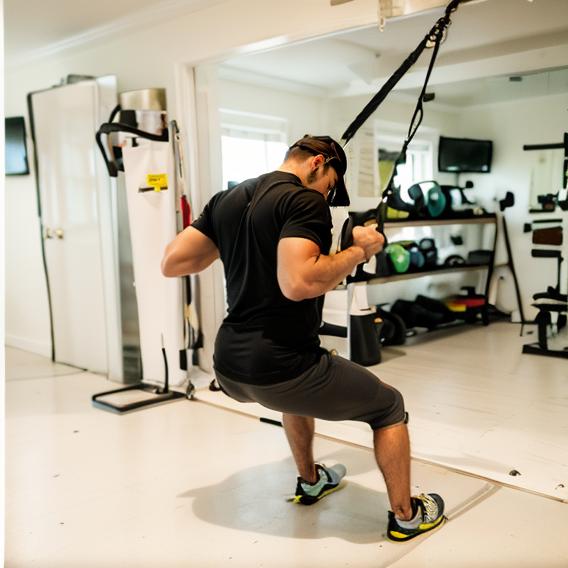
TRX Squat Row
TRX squat to row is sometimes called TRX squat to pull-up and it has similarities to TRX seated row. They both begin from a squat or seated position. In TRX seated row knees are partially bent and we maintain this position throughout the movement, but in TRX squat row we do a squat and from there pull the straps, lean backwards and simultaneously stand up.
Depending on the elbow position, we can do TRX squat high row or TRX squat low row.
To perform this exercise correctly proper adjustment of TRX straps is necessary. TRX squat row is a beginner friendly exercise. To increase the resistance we can add external weight like wearing a weighted vest.
In some variations people do a squat followed by a rowing movement which is a TRX squat row combo. Here we approach it as a primarily back exercise. So, we emphasize back muscles and the squat is just to assist and direct the movement. So, keep emphasis on the rowing movement and perform squat and row simultaneously.
TRX squat row also has similarities to TRX seated pull-up. The difference is that TRX squat row is a rowing exercise. So, we lean backwards while we stand up. Contrary to TRX pull-up, body positioning does not have to be directly below the anchor point.
5. TRX Single Arm Row
The TRX Single Arm Row is another variation of TRX rowing exercise. By performing TRX back row unilaterally, you also engage your core muscles to maintain stability and balance. All steps are like standard TRX row, except we do TRX single arm row using only one hand. TRX single arm row also has two variations.
TRX Single Arm Row—One Arm at a Time
Similar to standard TRX row, we hold both TRX handles at hands, but we perform one rowing move with one arm and the next move with another arm.
TRX Power Pull
TRX power pull is TRX single arm row with rotation. It is also known as TRX row and reach. Here is the step-by-step instruction:
- Similar to single arm row, we hold one handle in hand.
- While pulling the strap, the other arm is outstretched towards the TRX strap.
- Begin the reverse move by extending the flexed arm and rotating your body, led by the extended arm.
- Continue the rotation and extension until both arms are fully extended, and the body is toward one side.
- Repeat the pulling move.
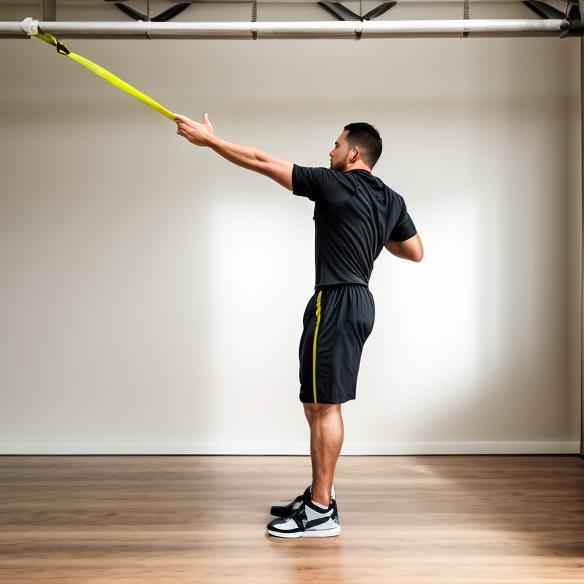
Perform this TRX back exercise for 12–15 repetitions with one arm, switch arms and perform another set. Do it 2–3 sets per arm.
This is a TRX back exercise, so try to engage rowing muscles and avoid using biceps to assist with the move. Experience and proper foot positioning help with finding the most suitable posture for this exercise.
6. TRX Back Fly
The TRX Back Fly, also known as TRX reverse fly, targets the muscles of your upper back, including the rhomboids, rear deltoids, and trapezius. It helps improve posture, shoulder stability, and upper body strength. Here’s a step-by-step guide on how to perform the TRX Back Fly:
- Begin with your arms extended forward, maintaining a straight back and engaged core.
- Initiate the back fly movement by pulling your arms outward and backward to a T position.
- Keep your elbows slightly bent and your arms at approximately shoulder height.
- Focus on engaging your upper back muscles and rear shoulders throughout the movement.
- Return to Starting Position.
TRX back fly is the reverse of TRX chest fly.
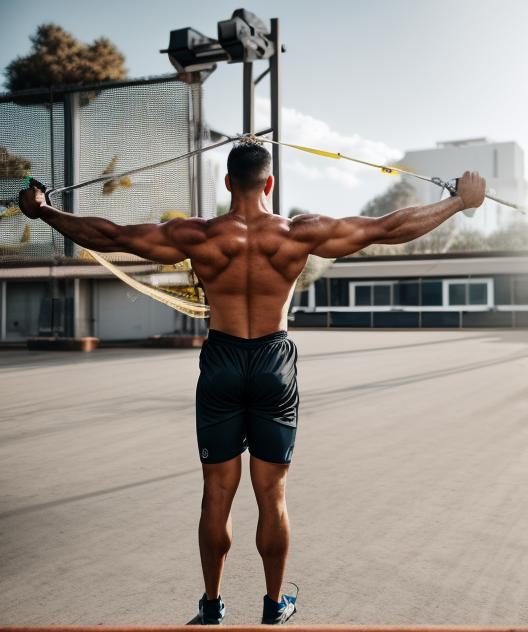
TRX Split Deltoid Fly
TRX split deltoid fly is similar to TRX back fly, except in this TRX back workout instead of opening arms horizontally, we open them vertically. So, as one arm moves upward, the other arm moves downwards. Afterwards they return to initial position. It is also known as TRX alligator pull.
This exercise is also called TRX alligator pull and it hits both back and deltoid muscles. Therefore, it is also included in shoulder exercises.
Here, You can find an ALL-in-one guide for TRX shoulder exercises.
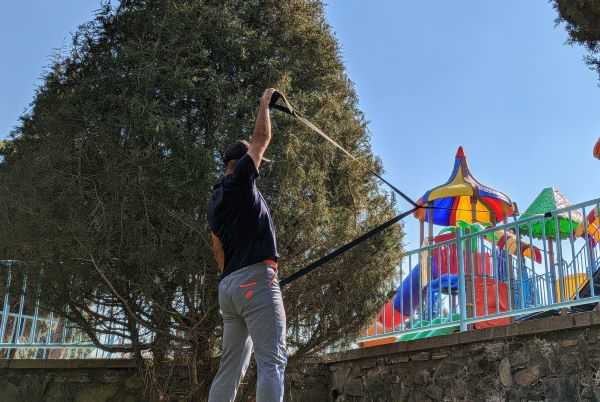
TRX Row to Fly
TRX row to fly is a combination of TRX row and TRX back fly. For that, we do a TRX row and when arms are pulled back, we open arms into a fly position. From there, perform an eccentric reverse fly to fully extend your arms in front of you.
7. TRX Clock Row
TRX clock row which is also named TRX clock pull or TRX archer row is the reverse of TRX Clock press. TRX clock row is a combination TRX row and TRX back fly, in which one arm performs the row while the other does the fly. The fly arm can point to different clock points, such as 3 or 10 o’clock. Switch between fly and row arms at each repetition.
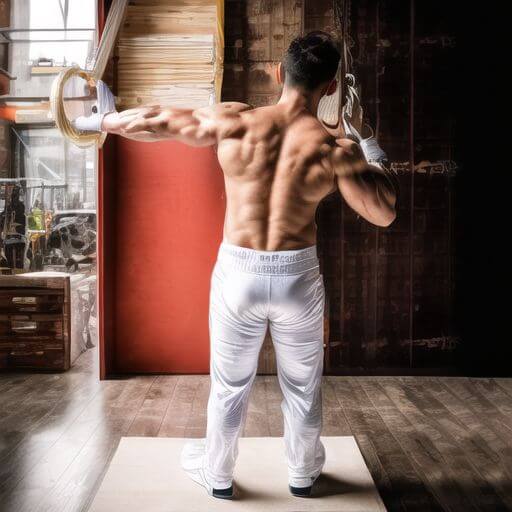
8. TRX Elbow Back Fly
- For TRX elbow back fly, put your forearms inside TRX foot cradles.
- Position foot cradles near elbows to reduce engagement of biceps.
- Decline backward and find a starting position at a suitable slope.
- By opening your arms, lift your body weight forward and upward.
- Return to the initial position by closing arms.
This exercise is the reverse of TRX Elbow Chest Fly. It also involves fraction between forearm skin and foot straps. So, to prevent skin chafing and reduce fraction, you can wear compression arm sleeves.
Please note that some of the links on this website are affiliate links, which means that we may earn a commission if you click on the link and make a purchase. This won’t cost you anything extra.
Rubberbanditz Padded REGUL8R Compression Sleeves – the ultimate blend of comfort and protection. Engineered with silky polyester-spandex, they stay in place with a non-slip silicon strip. Embrace cozy compression to shield your arms from abrasions. Elevate your performance and style – get yours now!
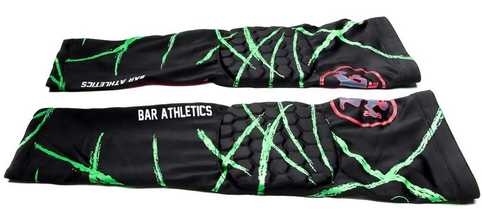
Applying Different Training Systems in TRX Back Exercises
Aside from changing hands and grip positions and placing body at different poses and angles, we can also imply various training methods in TRX back workouts.
TRX row superset is a training technique that involves performing two different variations of TRX rows back-to-back with minimal rest.
TRX eccentric row TRX eccentric row is a variation of the row exercises where the emphasis is placed on the eccentric or lowering phase of the movement. It involves slowly and controllably lengthening the muscles as you return to the starting position.
TRX plyometric row, also known as TRX explosive row, is an advanced variation of the rowing exercises that incorporates explosive and plyometric movements. It involves quickly pulling yourself towards the anchor point and dropping your weight backward to create a plyometric effect.
TRX row iso hold, also known as TRX row with pause, is a variation of TRX back exercises that adds an isometric hold at the peak of the movement. After pulling yourself towards the anchor point, you hold the position for a specific duration before returning to the starting position. This exercise helps to increase muscular endurance, strength, and stability in the back, as well as improving body control and promoting proper posture. The pause at the top of the row intensifies the contraction and challenges the targeted muscles in a static position.
Learn about applying various training methods in TRX back exercises at trx hypertrophy.
TRX Weighted Row
TRX weighted row involves adding additional weight or resistance to increase the difficulty and intensity of the movement. It can be done by wearing a weighted vest or attaching weight plates to your body or the TRX straps.
Using creativity and attaching external weights to TRX straps, we can have a whole variety of TRX row alternatives. In that case, we use TRX anchor point to hold the external object and from there we can do many variations of TRX back workouts.
TRX Row Combo Workouts
TRX row combo workouts are best suited to add functionality to TRX back exercises as they engage multiple muscle groups. Combo exercises are especially useful in sports-specific training such as swimming and climbing. They are less effective in building strength and mass when compared to isolated TRX back exercises. Since combo exercises are time efficient, they can be embedded in training programs when time is limited. Here are a few TRX row combo workouts:
- TRX back and bicep exercises
- TRX chest and back workout
- TRX back and shoulder workout
- TRX row to overhead press
- TRX row to bicep curl
- TRX row to face-pull
- TRX row to fallout
- TRX row to squat
- TRX row to y
To sum up, so far we explored TRX back row exercises, but TRX pull-up exercises are another set of TRX back workouts that challenge back muscles from another angle.
